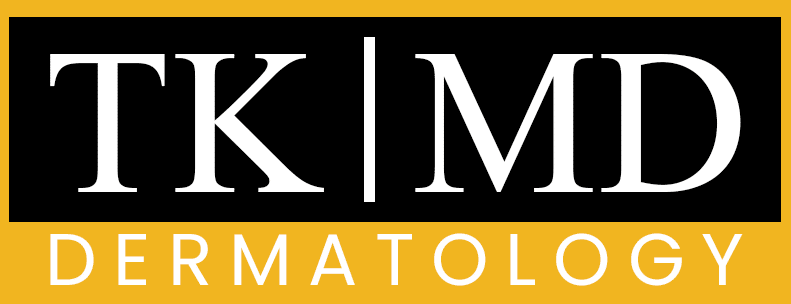Atrophic scars are a type of skin imperfection that occurs when the skin loses its structural integrity due to a deficiency in collagen production during the healing process. These scars are characterized by their sunken or depressed appearance, which results from the loss of tissue beneath the skin’s surface. Unlike hypertrophic scars, which are raised and often red or dark in color, atrophic scars create a noticeable indentation that can vary in size and depth.
They are commonly associated with conditions such as acne, chickenpox, and certain injuries, leaving individuals with a lasting reminder of past skin trauma. The formation of atrophic scars is a complex biological process. When the skin is injured, the body initiates a healing response that involves inflammation, tissue regeneration, and collagen synthesis.
However, if this process is disrupted or insufficient collagen is produced, the result can be a scar that lacks the necessary tissue to fill in the wound properly. This leads to the characteristic pitted or hollow appearance of atrophic scars. The psychological impact of these scars can be significant, often affecting an individual’s self-esteem and body image, prompting many to seek treatment options to improve their appearance.
Key Takeaways
- Atrophic scars are depressions or indentations in the skin caused by the loss of underlying tissue, commonly resulting from acne, surgery, or injury.
- Causes of atrophic scars include the body’s natural healing process, genetics, and certain skin conditions like acne and chickenpox.
- Types of atrophic scars include ice pick scars, boxcar scars, and rolling scars, each with their own distinct characteristics and appearance.
- Atrophic scars are diagnosed through physical examination, medical history review, and sometimes additional tests like skin biopsies or imaging studies.
- Treatment options for atrophic scars include non-invasive treatments such as topical creams, laser therapy, and microneedling, as well as invasive treatments like dermal fillers and surgical procedures.
Causes of Atrophic Scars
Atrophic scars can arise from various causes, with one of the most prevalent being acne. Acne lesions, particularly cystic acne, can damage the skin’s structure as they heal. When the inflammatory response is intense, it can lead to a significant loss of collagen and elastin, resulting in atrophic scarring.
The severity and duration of acne outbreaks play a crucial role in determining whether an individual will develop these scars. Those who experience frequent breakouts or delay treatment may find themselves more susceptible to long-term skin changes. In addition to acne, other conditions such as chickenpox can lead to atrophic scarring.
The pockmarks left behind after chickenpox lesions heal are classic examples of this type of scar. Similarly, injuries from accidents or surgical procedures can also result in atrophic scars if the healing process is compromised. Factors such as genetics, skin type, and age can influence an individual’s propensity to develop atrophic scars following skin trauma.
For instance, younger individuals may have more resilient skin that heals better than older adults whose skin has lost elasticity and collagen over time.
Types of Atrophic Scars

Atrophic scars can be classified into several distinct types based on their appearance and underlying causes. The most common types include ice pick scars, boxcar scars, and rolling scars. Ice pick scars are narrow and deep, resembling small puncture wounds in the skin. They are often associated with severe acne and can be particularly challenging to treat due to their depth.
Boxcar scars, on the other hand, have a more defined edge and are typically wider than ice pick scars. They create a rectangular or oval depression in the skin and are also linked to acne but can result from other skin injuries as well. Rolling scars present a different challenge; they have a wave-like appearance due to the tethering of the skin to underlying structures.
This type of scar is often less defined than ice pick or boxcar scars and can create an uneven texture on the skin’s surface. The varying types of atrophic scars require tailored treatment approaches, as each type responds differently to various therapies. Understanding these distinctions is crucial for both patients and practitioners when considering treatment options.
How Atrophic Scars are Diagnosed
| Diagnosis Method | Description |
|---|---|
| Physical Examination | Doctor examines the skin to look for atrophic scars, assessing their size, depth, and appearance. |
| Medical History | Doctor asks about past skin injuries, surgeries, or conditions that may have led to atrophic scarring. |
| Biopsy | A small sample of skin is taken and examined under a microscope to confirm the presence of atrophic scarring. |
| Imaging Tests | Advanced imaging techniques like ultrasound or MRI may be used to assess the depth and extent of atrophic scars. |
Diagnosing atrophic scars typically involves a thorough clinical evaluation by a dermatologist or qualified healthcare professional. The process begins with a detailed medical history that includes information about previous skin conditions, treatments undertaken, and any relevant family history of scarring. A physical examination follows, where the dermatologist assesses the type, size, and distribution of the scars on the patient’s skin.
This assessment helps determine the most appropriate treatment plan. In some cases, additional diagnostic tools may be employed to evaluate the depth and severity of the scarring. For instance, dermatoscopy—a non-invasive imaging technique—can provide a closer look at the skin’s surface and underlying structures.
This method allows for better visualization of scar characteristics that may not be apparent during a standard examination. Ultimately, accurate diagnosis is essential for developing an effective treatment strategy tailored to the individual’s specific needs.
Treatment Options for Atrophic Scars
The treatment landscape for atrophic scars is diverse, encompassing both non-invasive and invasive options tailored to address varying degrees of scarring severity. Non-invasive treatments often serve as first-line options for individuals with mild to moderate scarring. These may include topical treatments such as silicone gels or creams containing ingredients like retinoids or alpha hydroxy acids (AHAs), which aim to improve skin texture and promote collagen production over time.
For more pronounced scarring, invasive treatments may be recommended. These procedures often involve more significant intervention but can yield substantial improvements in scar appearance. Options such as chemical peels, microdermabrasion, and laser therapy are commonly employed to resurface the skin and stimulate collagen regeneration.
Each treatment option has its own set of benefits and potential side effects, making it essential for patients to engage in thorough discussions with their healthcare providers to determine the most suitable approach for their unique circumstances.
Non-Invasive Treatments for Atrophic Scars

Non-invasive treatments for atrophic scars focus on enhancing skin texture and promoting healing without surgical intervention. One popular option is microneedling, which involves using fine needles to create micro-injuries in the skin’s surface. This process stimulates the body’s natural healing response and encourages collagen production, leading to gradual improvement in scar appearance over time.
Microneedling can be performed in a clinical setting or at home with specialized devices designed for personal use. Another effective non-invasive treatment is chemical peels, which utilize various acids to exfoliate the outer layer of skin. By removing damaged skin cells, chemical peels promote cell turnover and encourage new skin growth.
Depending on the strength of the peel used—ranging from superficial to deep—patients may experience varying degrees of improvement in their atrophic scars. Additionally, topical treatments containing ingredients like hyaluronic acid or vitamin C can help hydrate the skin and enhance its overall appearance while supporting scar healing.
Invasive Treatments for Atrophic Scars
Invasive treatments for atrophic scars are typically reserved for individuals with more severe scarring that has not responded adequately to non-invasive methods. One widely recognized invasive option is laser therapy, which employs focused light energy to target scar tissue while leaving surrounding skin unharmed. Different types of lasers can be used depending on the scar’s characteristics; ablative lasers remove layers of damaged skin while non-ablative lasers stimulate collagen production without significant surface disruption.
Another invasive approach is subcision, a procedure that involves inserting a needle beneath the scar tissue to break up fibrous bands tethering the scar to underlying structures. This technique helps elevate depressed scars and improve overall skin texture. Additionally, dermal fillers may be used in conjunction with other treatments to temporarily fill in atrophic scars, providing immediate improvement while longer-term solutions are pursued.
Preventing Atrophic Scars
Preventing atrophic scars begins with proactive skincare management during periods of active skin conditions such as acne or injuries. Early intervention is crucial; individuals experiencing acne should seek treatment promptly to minimize inflammation and prevent deep scarring from occurring. Topical retinoids can help regulate cell turnover and prevent clogged pores while also promoting healing in existing lesions.
Moreover, proper wound care plays a vital role in preventing atrophic scarring following injuries or surgical procedures. Keeping wounds clean and moisturized can facilitate optimal healing conditions while minimizing inflammation that could lead to scarring.
Sun protection is equally important; UV exposure can exacerbate scar visibility by causing hyperpigmentation around the scarred area.
Using broad-spectrum sunscreen daily can help protect healing skin and reduce the risk of developing noticeable atrophic scars in the future. In summary, understanding atrophic scars—ranging from their causes and types to diagnosis and treatment options—empowers individuals to take control of their skincare journey effectively.
With advancements in both non-invasive and invasive treatments available today, those affected by atrophic scars have numerous avenues for improvement while also being equipped with knowledge on prevention strategies that can mitigate future scarring risks.
Atrophic scars are a common concern for many individuals, and finding the right treatment is crucial. Dr. Trisha Khanna, a board-certified dermatologist, discusses the various options available for treating atrophic scars in her article “Laser Skin Treatment Near Me: Local Experts”. In this informative piece, she highlights the benefits of laser skin treatments for improving the appearance of atrophic scars and achieving smoother, more even skin. If you are struggling with atrophic scars, this article is a must-read for valuable insights on effective treatment options.
FAQs
What are atrophic scars?
Atrophic scars are a type of scar that appears sunken or depressed in the skin. They are caused by a loss of tissue, such as collagen, fat, or muscle, and are often the result of conditions such as acne, chickenpox, or surgery.
What causes atrophic scars?
Atrophic scars are caused by a loss of tissue in the skin, which can be the result of conditions such as acne, chickenpox, surgery, or trauma. They can also be caused by the natural aging process, as the skin loses collagen and elasticity over time.
What are the different types of atrophic scars?
There are several different types of atrophic scars, including ice pick scars, boxcar scars, and rolling scars. Ice pick scars are deep, narrow scars that look like small holes in the skin. Boxcar scars are wider and have sharp edges, while rolling scars are broad depressions with sloping edges.
How are atrophic scars treated?
Atrophic scars can be treated with a variety of methods, including laser therapy, chemical peels, microneedling, dermal fillers, and surgical procedures. Each treatment option targets different aspects of the scar, such as stimulating collagen production, smoothing the skin’s surface, or filling in the depressed areas.
Can atrophic scars be prevented?
While atrophic scars cannot always be prevented, there are steps that can be taken to minimize their appearance. This includes treating acne promptly to reduce the risk of scarring, avoiding picking or squeezing blemishes, and protecting the skin from sun damage to prevent further collagen loss.


